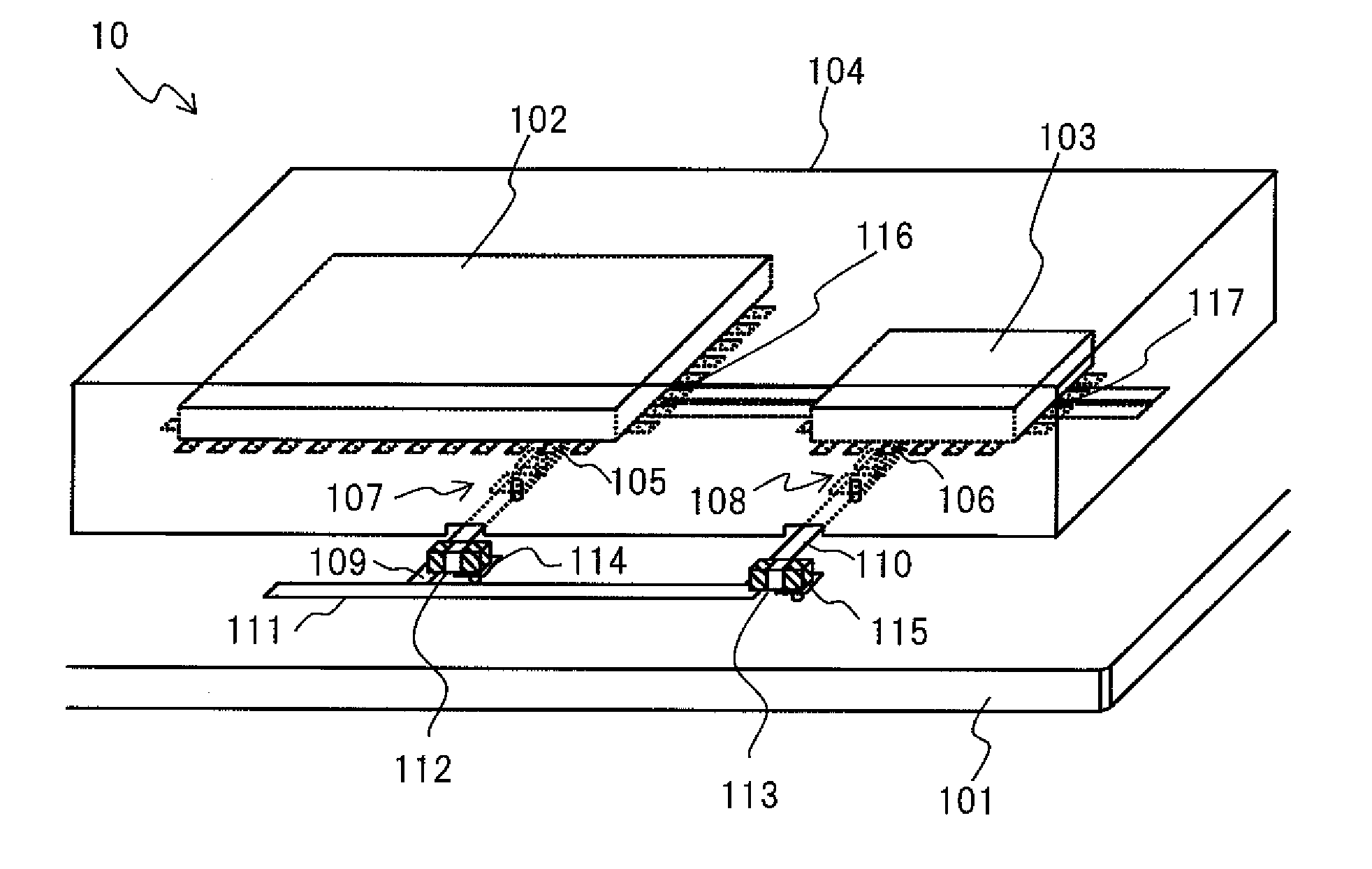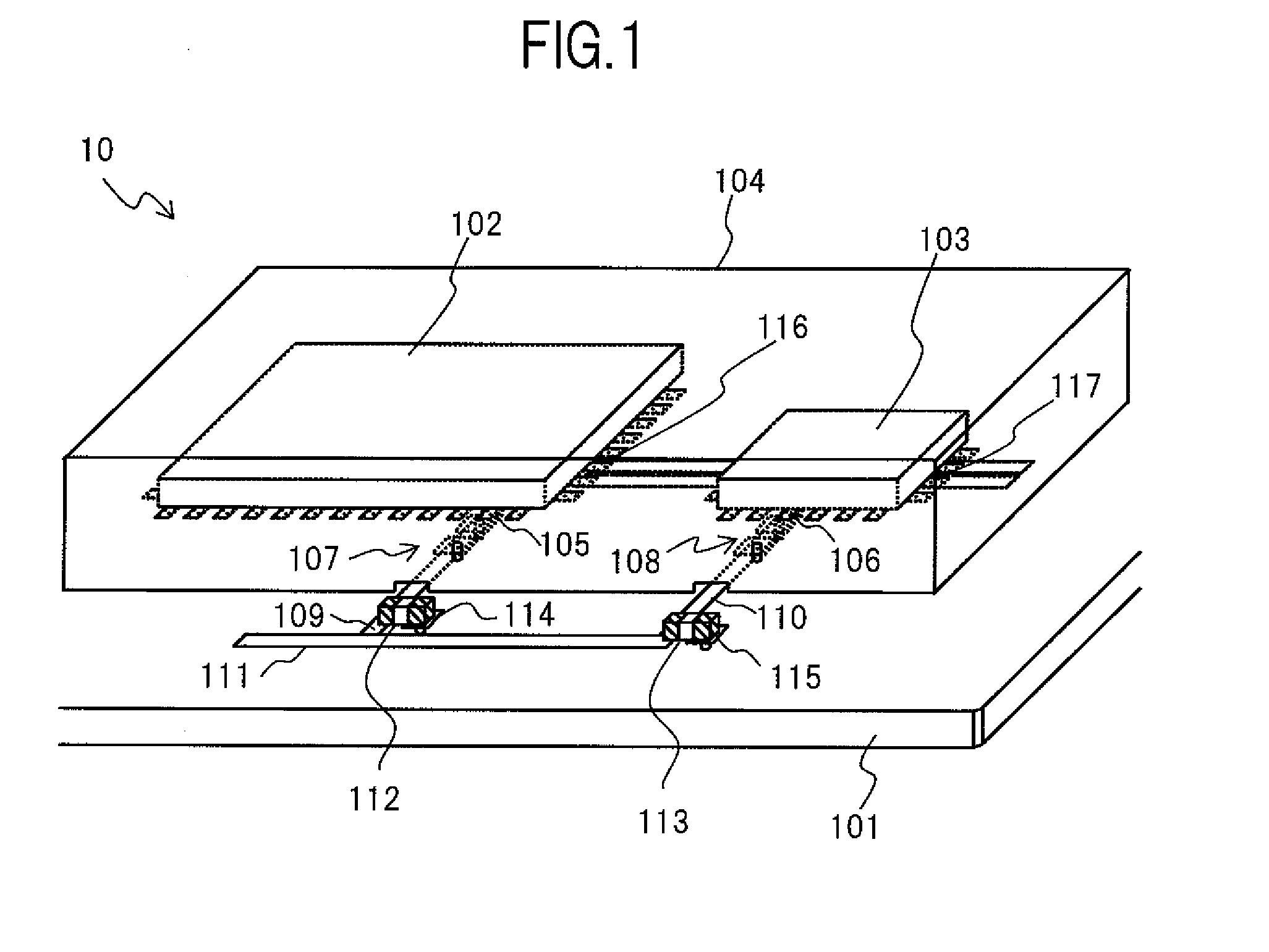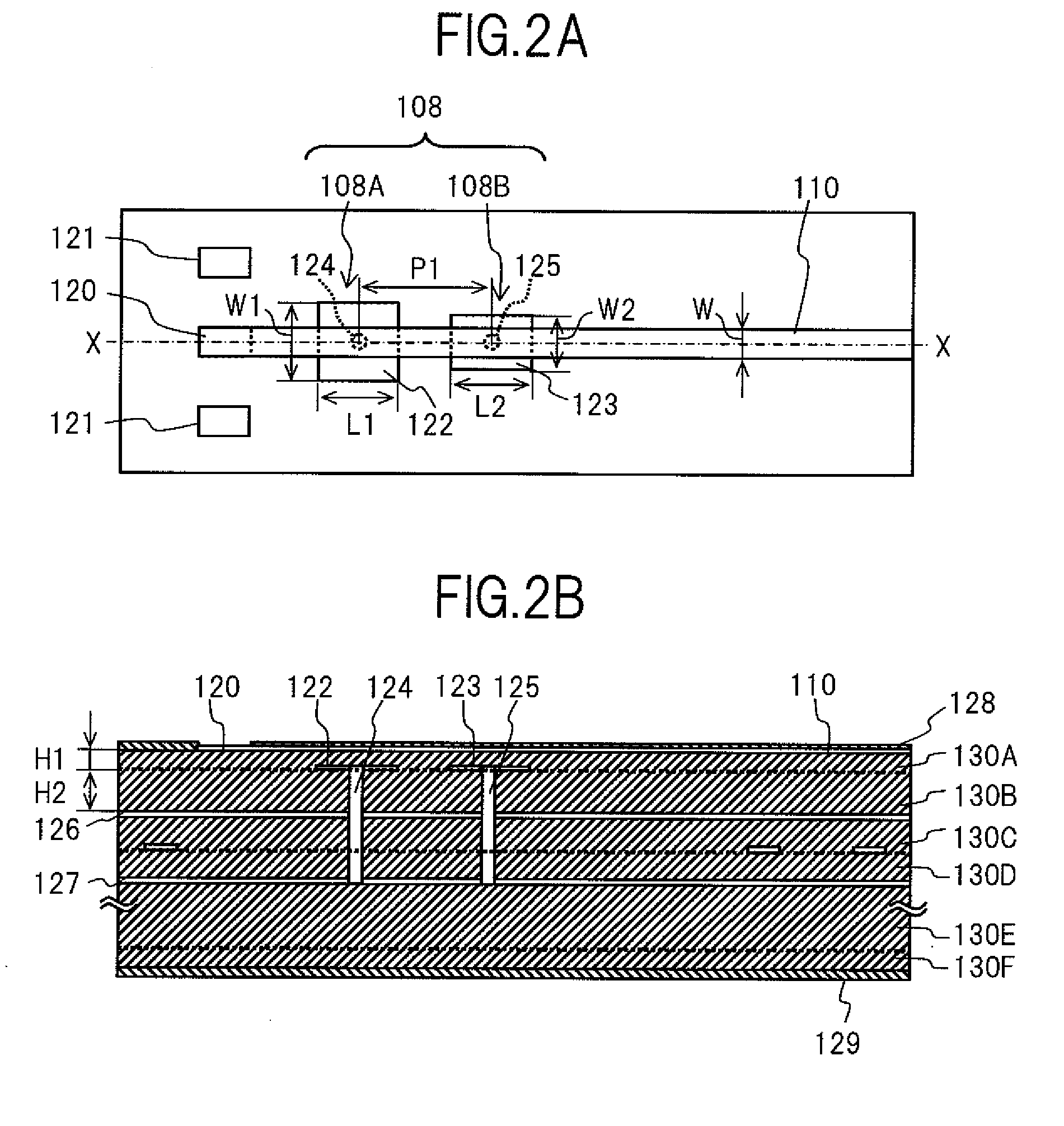Printed circuit board and optical transmission device
- Summary
- Abstract
- Description
- Claims
- Application Information
AI Technical Summary
Benefits of technology
Problems solved by technology
Method used
Image
Examples
first embodiment
[0042]First, FIGS. 2A and 2B are structural diagrams illustrating the trap filter according to the FIGS. 2A and 2B illustrate only the structure of the trap filter 108, but the trap filter 107 has the same structure. FIG. 2A illustrates a part of the substrate 101 in which the trap filter 108 is formed, which is viewed from above, and FIG. 2B is a cross-sectional view thereof along the line X-X of FIG. 2A.
[0043]As illustrated in FIGS. 2A and 2B, the trap filter 108 includes two resonance circuits arranged in series in the power supply wiring 110. A first resonance circuit 108A includes one region of the power supply wiring 110 formed of a surface-layer wiring provided to a surface of the substrate 101, a minute isolated pattern 122 formed of a first inner-layer wiring located below the one region, and a via hole 124 that connects the minute isolated pattern 122 and a ground wiring layer 126 formed of a second inner-layer wiring.
[0044]A second resonance circuit 108B includes one reg...
second embodiment
[0058]Next, as illustrated in FIG. 6, the line (4) of the conventional technology provided with no trap filter indicates that the maximum electric field intensity is equal to or larger than 90 dB (μV / m) in a frequency range from the frequency of 19 GHz to the frequency of 21.6 GHz, while the line (2) of the second embodiment indicates that the maximum electric field intensity of the unintentional electromagnetic wave is successfully reduced to equal to or smaller than 70 dB (μV / m) in the same frequency range. In other words, FIG.
[0059]6 indicates that the second embodiment produces an effect of such a great improvement that the unintentional electromagnetic wave is cut by equal to or larger than 20 dB in the domain of a frequency bandwidth of 2.6 GHz including the clock signal frequency of 21.5 GHz.
third embodiment
[0060]Further, as illustrated in FIG. 6, the line (3) of the third embodiment indicates that the maximum electric field intensity of the unintentional electromagnetic wave is successfully reduced to equal to or smaller than 70 dB (μV / m) at the frequency of 20.6 GHz.
[0061]The impedance at a tip of the power supply wiring 110 may vary from 0Ω (short: short-circuited) to infinity (open: open-circuited) depending on a circuit layout or a frequency, and the unintentional electromagnetic wave needs to be reduced in all of the cases. Therefore, FIG. 7 illustrates changes of the unintentional electromagnetic wave intensities in a case where a tip impedance of the power supply wiring 110 is caused to change at the frequency of 20.6 GHz at which the maximum reduction effects are obtained in FIG. 6. In FIG. 7, the line (1) represents the first embodiment, the line (2) represents the second embodiment, the line (3) represents the third embodiment, and the line (4) represents the conventional te...
PUM
 Login to View More
Login to View More Abstract
Description
Claims
Application Information
 Login to View More
Login to View More - R&D
- Intellectual Property
- Life Sciences
- Materials
- Tech Scout
- Unparalleled Data Quality
- Higher Quality Content
- 60% Fewer Hallucinations
Browse by: Latest US Patents, China's latest patents, Technical Efficacy Thesaurus, Application Domain, Technology Topic, Popular Technical Reports.
© 2025 PatSnap. All rights reserved.Legal|Privacy policy|Modern Slavery Act Transparency Statement|Sitemap|About US| Contact US: help@patsnap.com



